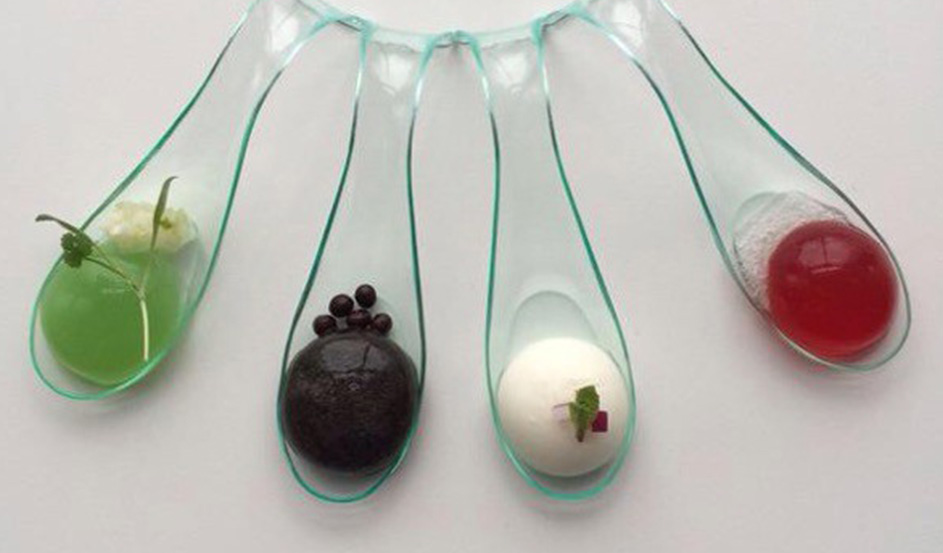
DEVELOPING A DISH – THE 4 TASTES
As mentioned in my previous article; menu development and the creation of new dishes are among the most exciting parts of our work. When bringing a new concept to life we begin by developing a frame work which outlines the menu, service style, key ingredients & techniques, music, sensory cues and guest experience. After discussions with our many collaborators, including Professor Charles Spence and Gr Richard Cytowic; by late last year we already knew we would have a dish titled The 4 tastes on our Synaesthesia menu and that the purpose of the dish would be to highlight individual associations between colour and flavour, and also the more universal (and cultural) associations which exist.
This following paragraph contains excerpts from a 2014 paper titled Cross-cultural differences in crossmodal correspondences between basic tastes and visual features, by Xiaoang Wan, Andy T. Woods, Jasper J. F. van den Bosch, Kirsten J. McKenzie, Carlos Velasco and Charles Spence. For the purpose of their study a total of 452 participants from China, India, Malaysia, and the USA viewed color patches, shapes, and textures online and had to choose the taste term that best matched the image and then rate their confidence in their choice. Across the four groups of participants, the results revealed a number of crossmodal correspondences between certain colors/shapes and bitter, sour, and sweet tastes. Cross-cultural differences were observed in the correspondences between certain colors, shapes, and one of the textures and the taste terms. The taste-patterns shown by the participants from the four countries tested in the study are quite different from one another, and these differences cannot easily be attributed merely to whether a country is Eastern or Western. These findings therefore highlight the impact of cultural background on crossmodal correspondences. As such, they raise a number of interesting questions regarding the neural mechanisms underlying crossmodal correspondences. The study found that the most notable taste/colour associations were; salty=white, sweet=red, sour=green, bitter=black
So the plan was to develop 4 ‘bite’ size elements each of which would represent one of the four most recognised and familiar tastes; sweet, sour, salty, bitter. In case anyone was wondering why other tastes such as fatty, umami etc. are not included, I’ve limited the course to the four tastes with which people are most familiar with. The service of the dish commences once the video introducing diners to the topic of the senses and synaesthesia (featuring Professor Spence) is screened. Towards the end of this 3-4 minute video the professor instructs the guests to arrange the 4 elements in front of them according to what they perceive as being Salty, Bitter, Sour and Sweet. Once the guest has followed the instructions it’s time to put their perceptions to the test, as they won’t find out whether they are right or wrong till they have tasted each element, for some this is a straight forward experience, for others some of the elements may be incongruent and surprising.
Now we had the plan the first step was to find congruent flavours which matched the above research while ensuring we also had good flavour combinations (after all, who wants a mouth full of one monotone taste? – It needed to have great flavour!). After much thought and testing the results were;
Sweet/Red: Cranberry & rose
White/Salt: Yoghurt raita with mint and red onion (Indian style salty yoghurt)
Black/Bitter: Guiness & dark chocolate
Green/Sour: Lime with fennel, cinnamon and coriander
Next we had to figure out the best culinary method to communicate the idea and flavour behind the dish. So we tested a range of methods and decided upon spherification as it allowed for the dinners to get a rush of flavour which dissipates rather quickly – we found other forms of gelling made flavours linger for too long in the mouth and therefore inhibit your appreciation for the following tastes. The spheres are placed on spoons which the guest can move around as to place them in the order instructed by Professor Spence in the video.
And there you have the concept behind this dish! (For more on dish development read about Bouba & Kiki)



Leave a Reply